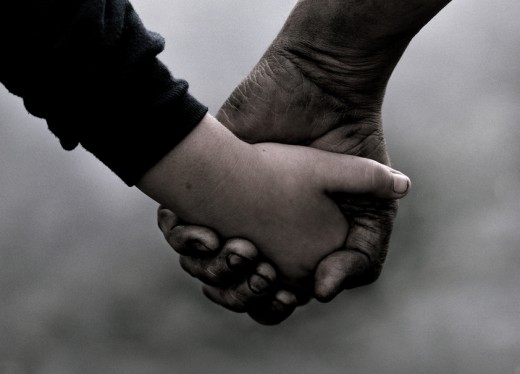
This post first appeared on the Image Brief blog.
Let’s face it. Lifestyle photography can be cheesy, bland, or completely lackluster. Even for experienced creatives, it’s hard to balance what’s engaging with what sells. That’s why we see so many cheesy stock photos — and so many boring ads — in marketing materials. The ‘search’ for the perfect visual can be frustrating, particularly when we’re using broad keywords like ‘lifestyle photography’ and ‘happy people’ to choose the perfect photo. We need to dig deeper.
In a study of more than 10,000 participants from 48 countries, psychologists Ed Diener of the University of Illinois at Urbana-Champaign and Shigehiro Oishi of the University of Virginia found that worldwide, people rate happiness as being more important than any other life outcome including living a life with meaning, become rich, and getting into heaven. It’s this reason why lifestyle photography featuring authentic happiness drives sales.
Stop spending hours sifting through cheesy, awkward, forced, and staged photos. Instead, use psychology to guide your search for the perfect photo. Here are five studies that will help art directors, brand marketers, and designers simplify the process of choosing amazing, impactful photos.
1. We feel happier when we act like extroverts
Across multiple surveys of hundreds of people in the United States, Venezuela, the Philippines, China, and Japan, researchers found that people feel more positive emotions “in daily situations where they either acted or felt more extroverted.”
Participants in the study were told to act in an outgoing way for 10-minutes and were then asked to describe their emotions. Self-described introverts and extroverts both reported that outgoing activities made them feel happier. This research complements a 2002 study in which behaviors such as being talkative and adventurousness were correlated with high energy levels.
Visual Marketing Takeaways
As advertisers, more often than not, your task is to create campaigns that illicit feelings of happiness in your audience. One way to achieve your goal is to select images that showcase extroverted people having fun, at parties, and in groups.
The image above, for instance, was chosen from searching photo collections of people having fun together. With some people looking into the camera—and some people looking away—the photo captures an event ‘in the moment’ rather than feeling forced or staged. What’s most important is that you choose a moment that your target audience can relate to having experienced.
2. Friendship makes us happy in many different ways
As psychologist Patty O’Grady points out in a Psychology Today article, “friendship is a highly complex and emotionally demanding transaction.” She further explains that there are variations, between friendships, of how we express ourselves:
- With casual friendships, we share common thoughts and feelings in cautious ways. We hold close boundaries and avoid discussing sensitive or difficult topics.
- Agentic friendships are pragmatic in nature and oriented around a common goal or passion.
- True friends express authentic emotions without fear due to a mutual feeling of trust, honesty, empathy and willingness to help each other.
Visual Marketing Takeaways
Let’s say that you’re creating an ad campaign for a home decor, furniture, real estate, or lifestyle brand. It’s tempting to position what you’re selling as the focal point of your campaign, but there may be more to the story—for instance, the people whose lives your product affects.
3. There’s power in nostalgia
In a recent study, researchers asked 135 students to include a time capsule that included a recent conversation, the last social event they’d attended, an extract from a paper they’d written, and three favorite songs. Participants were also asked to predict how these items might make them feel three months later, after re-opening the time capsule.
The students underestimated the level of surprise and curiosity they would feel when rediscovering these items. Long story short is that they were wowed by the level of meaning from mundane events.
Visual Marketing Takeaways
Imagine seeing a photo that reminds you of your favorite childhood memory—a moment with your parents, a favorite teacher, a class that you took, or even a pet. You probably want to smile, cry, laugh, and stay silent at the same time.
As a creative, or brand manager, you’re well-aware that photography is emotional. Choosing an image that resonates with your target audience, however, can be a challenge. Start with your customer segments and pinpoint a ‘memory’ that these groups are likely to share. Work with photographers who can capture these beautiful, authentic, and universal life experiences.
4. Experiences trump materialism
Researchers at SFU found that people report higher levels of happiness when they spend their time and money on experience based purchases.
Study participants were asked to answer questions about recent purchases, which included a mix of things and experiences. In almost all cases, the experiences won—people feel happier when they spend money on dining out, movies, travel, and other experiences.
Ryan Howell, an assistant professor of psychology at SFU, explains that “experiential purchases, such as a meal out or theater tickets, result in increased well-being because they satisfy higher order needs, specifically the need for social connectedness and vitality.” Howell further explains that these happiness levels stem from an innate human desire to feel alive.
Visual Marketing Takeaways
When photographing a car, promoting a restaurant, or showcasing a travel destination, it’s easy to get caught up in the product that you’re selling. But there’s always more to the story. For instance, it’s not going to be the car that makes you happy. It’s going to be the time you spend driving it, the road trips with friends and family, and the places that you see. If you’re taking a vacation, your happiest moments will come from your new experiences—good places, good food, and good people.
No matter what you’re selling, make sure that your value proposition is experience rather than product-driven. Your photographer can help you tell this story, without de-emphasizing your product or service, in a subtle way.
5. We’re drawn to kindness
Common sense tells us that there are certain things that we do that make us extremely happy. Research tells us that among those ‘certain things,’ kindness is often top-ranked. There are two experiments worth knowing here:
1 – In one experiment, a group of 9- to 11-year old kids were asked to do acts of kindness for several weeks. These kids experienced higher levels of happiness over time and became more popular with their peers.
2 – In another study, employees were asked to be generous to a randomly chosen list of colleagues. Both gives and receivers experienced direct benefits of increased happiness, connectedness, flow, and decreasing depression. What’s interesting to note is that even observers reported higher levels of happiness.
Visual Marketing Takeaways
When telling the story behind your brand, show that you care. Make kindness the focal point of your story—the good that you’ve generated and the philanthropy behind your vision. Photography can bring these stories to life by showing rather than telling the impact that you’ve made.
Final thoughts
If you’re ever struggling to find the perfect photographer or choose the ‘right’ image, look to psychology. As human beings, we’re pattern-driven—and as creatives, we can make the strongest impact by balancing beauty and science.
There’s no reason to spend hours sifting through horrible stock photography. Look to see what inspires people on a psychological level. Psychology can be your blueprint for the subtle decisions that you’re making when selecting lifestyle photography that feels fresh, authentic and most importantly, genuine.
Read Next: How to get more from your product development teams
Photo credits: Augustus Butera, Deborah Kolb, Greg Clarke, Lauren Weeks, Ulysses Padilha, Bruce Allan
Get the TNW newsletter
Get the most important tech news in your inbox each week.









